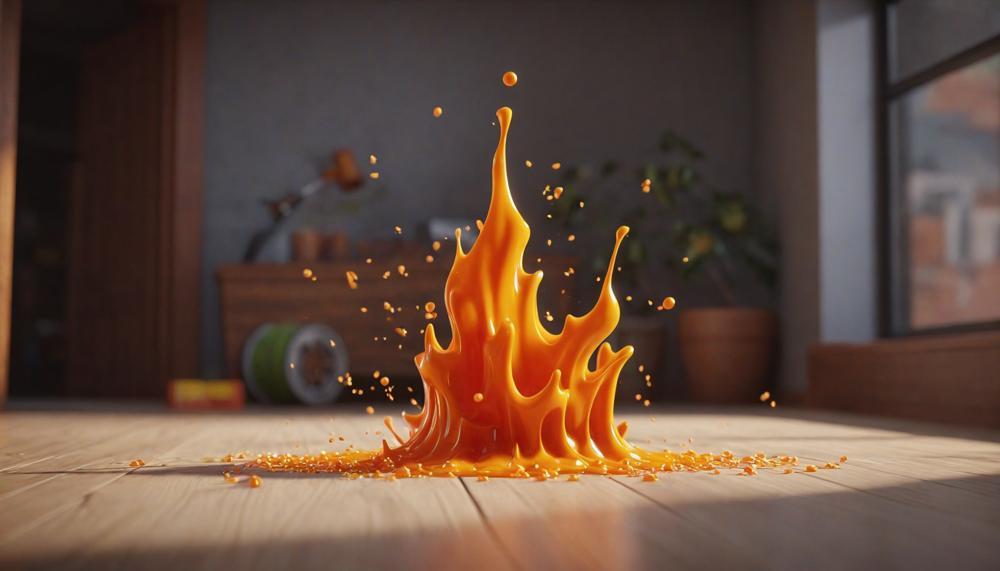Yes, but with reservations. Hot glue can provide a quick, temporary fix for minor water leaks, but it is not a reliable long-term solution. While it bonds quickly and solidifies upon cooling, it struggles to withstand continuous water pressure and can lead to more severe issues down the line.
Key Takeaways:
- Quick Fix, Not Permanent: Hot glue works for immediate, minor repairs but fails as a long-term solution.
- Pressure and Flow Challenges: Hot glue’s bond may weaken under continuous water flow and pressure.
- Potential for Further Damage: Using hot glue can trap water, potentially causing corrosion and more extensive damage.
- Understanding the Leak: Assess the type and severity of the leak before opting for hot glue.
- Pros of Hot Glue:
- Quick-drying and easy to apply
- Waterproof once set
- Affordable and versatile for various DIY projects
- Cons of Hot Glue:
- Not flexible or durable under constant exposure to water
- May fail under high pressure or heavy loads
- Alternative Solutions: Consider professional assistance or specialized sealants for a more reliable fix.
By understanding the limitations and appropriate applications of hot glue, you can make informed decisions on whether it is suitable for addressing your specific water leak issues.
Table of Contents
What is Hot Glue?
Hot glue is an adhesive melted using a hot glue gun, then applied to surfaces to bond them together. It’s made from thermoplastic materials, which soften when heated and solidify upon cooling. The primary components include thermoplastic polymers, waxes, and tackifiers.
How Hot Glue Works:
- Melting: The glue sticks are inserted into a hot glue gun, which heats the glue until it becomes liquid.
- Application: The melted glue is dispensed through the gun’s nozzle, allowing precise application.
- Bonding: When applied to a surface, the hot glue cools rapidly, solidifying and forming a strong bond.
Advantages
- Quick Drying: Dries fast, making it ideal for projects requiring immediate adhesion.
- Versatility: Bonds a wide range of materials, including wood, fabric, metal, and plastic.
- Ease of Use: Simple application with a glue gun, suitable for both professionals and hobbyists.
- Waterproof: Offers some resistance to water, though not suitable for long-term exposure.
Limitations
- Temporary Fixes: Not ideal for permanent solutions, especially under constant water exposure or heavy loads.
- Heat Sensitivity: Bonds can weaken if exposed to high temperatures.
Hot Glue Composition
| Component | Description |
| Thermoplastic Polymers | Provides flexibility and strength; the base of the glue. |
| Waxes | Ensures the glue melts smoothly and flows easily. |
| Tackifiers | Enhances stickiness and improves adhesion. |
How Does Hot Glue Work?
Hot glue creates a seal to stop water leaks through its unique adhesive properties. Here’s how it works:
How Hot Glue Creates a Watertight Seal
Hot glue, primarily composed of thermoplastic polymers, waxes, and tackifiers, melts in a glue gun and solidifies upon cooling. When applied to a surface, it penetrates small crevices, forming a mechanical bond with the surface structure.
Key Factors:
- Material Compatibility: Hot glue works best on non-porous surfaces like glass, metal, or plastic. Its effectiveness is limited on porous materials where it cannot form a strong bond.
- Adhesive Type: Using waterproof or marine-grade hot glue enhances the seal’s durability, especially in wet environments.
- Application Technique: Applying the glue in multiple layers ensures no gaps or bubbles, which is crucial for a watertight seal.
Practical Application Steps
- Preparation: Clean the surface thoroughly to remove any dirt or grease.
- Heating: Use a high-temperature glue gun to melt the glue.
- Application: Apply the hot glue directly to the area of the leak, ensuring it fills all gaps.
- Layering: For optimal results, apply multiple layers, allowing each to cool and harden before adding the next.
- Inspection: Check for any gaps or weak spots after the glue has cooled.
Comparative Alternatives
While hot glue can be effective, other sealants might offer better long-term solutions for water leaks:
| Sealant Type | Advantages | Disadvantages |
|---|---|---|
| Silicone Sealant | Highly flexible, excellent for various surfaces | Long curing time |
| Epoxy Resin | Extremely strong, durable | Can be difficult to apply |
| Duct Tape | Quick and easy application | Not a permanent solution |
Can Hot Glue Make a Watertight Seal?
The short answer is no, hot glue cannot effectively seal a water leak. While hot glue can provide a temporary fix on non-porous surfaces, it lacks the durability and waterproof qualities needed for a reliable seal. Hot glue is not designed for plumbing or structural repairs and is prone to deteriorating under prolonged exposure to water.

For a lasting solution, it’s better to use products specifically intended for sealing leaks, such as silicone sealants, epoxy resins, or specialised plumbing sealants.
Alternatives to Hot Glue for Sealing Water Leaks
| Product | Description | Application |
| Silicone Sealant | Flexible, waterproof, and long-lasting sealant | Ideal for bathrooms, kitchens, and plumbing joints |
| Epoxy Resin | Strong adhesive that can bond to various surfaces | Used for fixing cracks in pipes, tanks, and other water-containing structures |
| Plumber’s Putty | Malleable substance that hardens to form a durable seal | Commonly used to seal fixtures and plumbing fittings |
| Waterproof Tape | Quick-fix tape that adheres well to wet surfaces | Suitable for emergency repairs on pipes and hoses |
For those looking to ensure a watertight seal, it’s critical to choose the right product tailored for the specific type of leak. Hot glue might be handy for crafting and minor repairs, but when it comes to water leaks, relying on appropriate materials will save time, money, and prevent further damage.
Pros and Cons of Using Hot Glue for a Watertight Seal
| Pros | Cons |
|
|
Hot glue, while handy for quick fixes, falls short in creating reliable, long-lasting watertight seals. It’s suitable for projects where aesthetics and speed are key, but for robust sealing needs, consider alternatives like silicone sealants or epoxy resins.
Tips for Making a Watertight Seal with Hot Glue
Preparation and Surface Cleaning
Application in Layers
- Apply a thin layer of hot glue first and let it cool completely. This initial layer creates a strong base.
- Add subsequent layers, allowing each to cool and harden before applying the next. This prevents gaps and bubbles.
Building Up the Seal
- Continue layering until you achieve a sufficient thickness. A thicker seal ensures robustness and reduces the risk of leaks.
Smoothing and Shaping
- Use a tool like a spatula to smooth out each layer while it’s still warm. This helps in creating an even surface.
- Avoid overworking the glue to prevent weakening the seal.
Testing the Seal
Once the glue has fully hardened, test the seal by pouring water over it. Check for any leaks and reapply glue if necessary.
Usage and Limitations
Remember, hot glue is suitable for temporary fixes and low-pressure situations. For high-pressure or long-term solutions, consider more durable sealants like silicone or epoxy.
Conclusion
Hot glue can be a lifesaver for quick, temporary fixes to minor water leaks, but it’s not the hero for long-term solutions. It excels in immediate bonding and ease of application, making it a handy tool for DIY enthusiasts. However, its limitations under continuous water pressure and exposure render it a stopgap rather than a permanent fix.
Hot glue’s waterproof properties do provide a temporary seal, yet it falls short when dealing with high-pressure scenarios or significant leakages. Over time, the glue’s bond may weaken, potentially leading to more severe issues like corrosion or exacerbated leaks.
For more reliable solutions, turning to specialized sealants such as silicone or epoxy resin is wise. These alternatives offer robust, durable seals designed to withstand prolonged water exposure and pressure. Silicone sealant, known for its flexibility and waterproof capabilities, is ideal for bathrooms and kitchens. Epoxy resin, celebrated for its strength and durability, is perfect for heavy-duty applications like plumbing and structural repairs.
In essence, while hot glue can patch up minor leaks temporarily, investing in the right materials for long-term fixes will save you time, effort, and potential damage.






